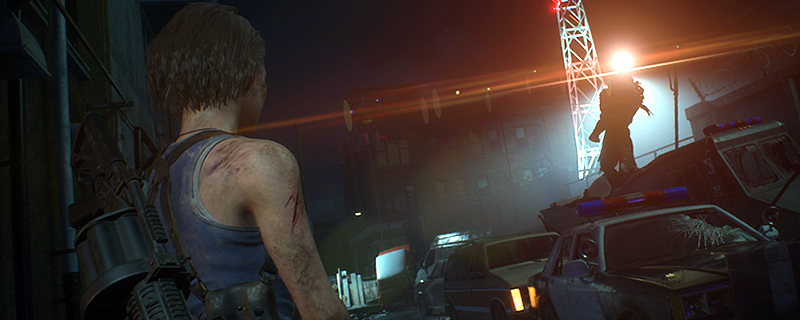Resident Evil 3 Remake PC Performance Review and Optimisation Guide
Conclusion – Is RE 3 Capcom’s best remake to date?
With remakes and remasters being so common within today’s gaming market, it means a lot when we say that Resident Evil 3 is easily the best PC game remake that we have ever played. Â
Resident Evil 3 takes the already stellar baseline of Resident Evil 3 and has innovated further with a better DirectX 12 implementation, improved features such as the game’s Interlacing and Volumetric Lighting and new features like AMD’s FidelityFX. All of these work to make Resident Evil 3 one of Capcom’s best PC releases to date, and that’s high praise given the solid performances offered by Devil May Cry 5 and Resident Evil 2 in 2019.Â
While Resident Evil 3 has been considered one of the weaker games in the franchise, the game’s use of modernised gameplay has done a lot to make the game more compelling, delivering a similar experience to Resident Evil 2’s 2019 remake and much better storytelling than the original. It was also great to see how Resident Evil 3 interlinks with Resident Evil 2, making the game incredibly satisfying to play after out visit to Racoon City in 2019.Â
Performance-wise, Resident Evil 3 is incredibly easy to run when compared to other modern AAA titles and offers great visuals at both its lowest and highest settings. Even users of lower-end PC hardware should have a great experience here, which is excellent news for users of older graphics cards.Â
When we started playing Resident Evil 3, we noted that the game defaulted to DirectX 12 on our RTX 2080 Ti graphics card. While Resident Evil 3’s DirectX 12 support is much improved over what we had seen in Resident Evil 2, DirectX 11 proved to offer higher performance levels with every graphics card we tested (see page 4). That said, DirectX 12 has its benefits, as the API provides higher framerates in CPU limited scenarios, making the game’s DirectX 12 support a useful add-on. That said, we would love to see Resident Evil 3’s GPU performance improve under DirectX 12. Â
Out main nitpick with Resident Evil 3’s PC version is Capcom’s continued use of lower framerate zombie animations for distant shamblers. This change looks incredibly out of place on PC, and the CPU-saving nature of the effect is ultimately unnecessary on a hardware platform with stronger processors than today’s consoles. Like Resident Evil 2’s PC version, we would like to see Capcom release an option to disable this effect on PC.Â
With a few settings optimisations, even graphics cards like AMD’s RX 580 and Nvidia’s GTX 1060 can achieve solid 60+ FPS framerates in practically all areas of the game. For 1440p, the same can be said for Nvidia’s GTX 1080 and GTX 1660 Super and AMD’s RX Vega 56. At 4K, things become more challenging, but with the right settings, GPUs like the RTX 2060 and RX 5700 can achieve solid 60+ FPS performance at 4K.Â
Typically, Resident Evil 3 tends to run faster on AMD’s Radeon graphics hardware, but the lead isn’t so huge that we would say that this game runs badly on Geforce hardware. Resident Evil 3 is clearly an AMD optimised title, but that doesn’t mean that this game doesn’t offer strong performance on competing graphics hardware.Â
Settings-wise, the first port of call for all PC gamers should be Volumetric Lighting, as setting this option to medium will result in a more substantial performance boost than any other graphical option within the game. Better still, the graphical difference is practically unnoticeable, making this a great way to gain performance in Resident Evil 3’s PC release.Â
Like Devil May Cry 5’s PC version, the RE Engine’s Interlacing option is a great way to boost Resident Evil 5’s PC performance. On our RX 5700 at 4K, enabling this option yielded a 50% boost in average and 95th percentile framerates, getting the game’s average framerate to over 60FPS on a relatively affordable graphics card. Yes, this does make the game a little blurrier, but a 50% performance gain is nothing to be sniffed at, especially at 4K.Â
Like Resident Evil 2, Resident Evil 3’s transcends its original 1999 version, highlighting exactly how remakes should be done for many early 3D titles. The same story beats are present, but the game’s improved storytelling and visuals do a lot to heighten the impact of several plot points while making the game a lot more appealing to series newcomers.Â
When it comes to Resident Evil 3’s PC version, the game leaves very little to be desired, it offers excellent performance across a wide range of hardware, plenty of graphical options to explore, improvements to the game’s DirectX 12 implementation and Interlacing features over Resident Evil 2 and excellent visuals on both its higher and lowest graphics presents. Capcom, you should be very proud of what you have achieved here.Â
– At the time of writing, PC codes for Resident Evil 3 are currently shipping for free with Radeon RX 5500M/5500/5500 XT, RX 5600M/5600/5600 XT, RX 5700, and RX 5700 XT graphics cards and OEM systems. This offer only applies at participating retailers while AMD’s current “Raise The Game” bundle is lasts. Â
 Â
You can join the discussion on Resident Evil 3’s PC performance and how to optimise the game on the OC3D Forums.Â



